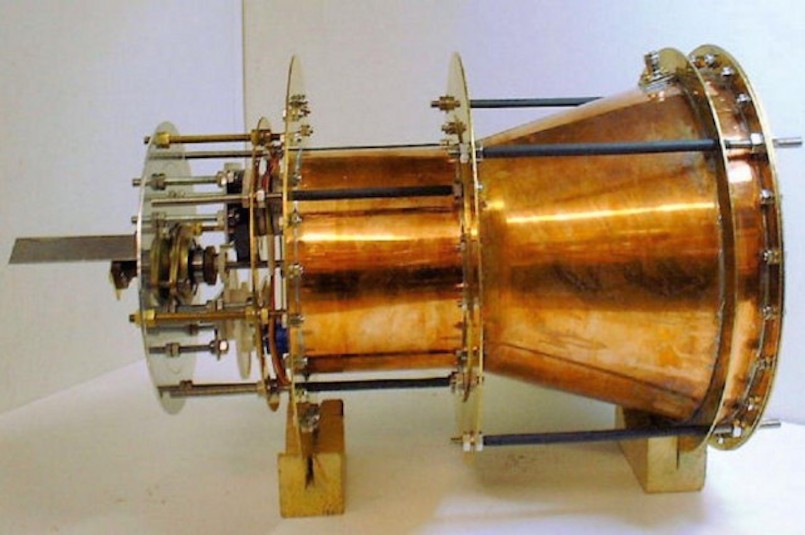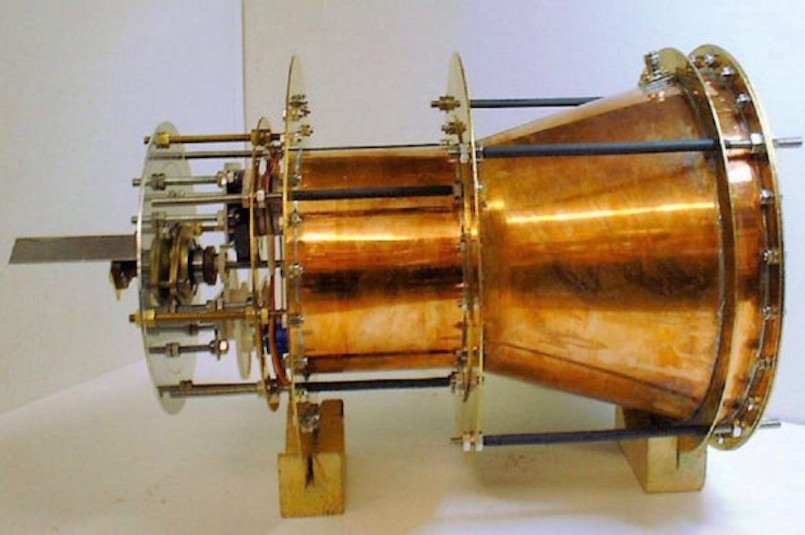
The future is here, folks. In a move that would have even Scotty from Star Trek scratching his head, NASA are currently working on something they call an electromagnetic propulsion drive (or EM Drive), which is a type of engine that requires no fuel and appears to defy the laws of physics. It shouldn’t work at all, yet testing has repeatedly shown that it does, in fact, produce thrust.
Why? No one seems to know, because even the researchers working on the new engine are at a loss to explain exactly how it functions. So what’s this mind-boggling new technology all about, and what are the implications if it turns out to be legit? Let’s find out…
Reinventing the Wheel
In the early 2000s, a British researcher named Robert Shawyer came up with an idea for a propulsion drive that could convert electromagnetic energy into thrust by colliding microwaves in an enclosed chamber. It would require no propellant, creating its own fuel from particles that exist in the vacuum of space instead. If the figures added up, this massively powerful new engine could propel us to Mars in just ten weeks, or Pluto in around 18 months.
Shawyer’s invention promised to revolutionise space travel and bring us leaps and bounds closer to making interstellar exploration a reality. But he was widely ignored and even ridiculed because a propellant-free drive violates the conservation of momentum—a fundamental concept of physics. However, this hasn’t deterred NASA and other independent researchers from having a go at building one anyway.
The Little Engine That Could
To everyone’s surprise and amazement, initial testing showed that the EM Drive actually does produce thrust. This got a lot of people very excited, but sceptics rightly reserved judgement until they could properly scrutinise the data and conditions of early experiments. On closer inspection, it was proposed that the thrust signals produced by the new engine were actually artifacts or side-effects of the measurement process itself, rather than a legitimate new form of propulsion.
But after more than a year of testing, methodically eliminating external variables, and even trying it out in a vacuum, the EM Drive just keeps on working. And it’s not just NASA—independent researchers around the world have confirmed its veracity, including one Martin Tajmar of Dresden University of Technology in Germany, who has years of experience testing and debunking revolutionary forms of propulsion.
The Future of the EM Drive
It’s definitely cool to think about what we could achieve if this new engine is viable. We could potentially get to see the star at the center of another solar system within our own lifetimes, or find another “Earth” to inhabit (because we’re doing an amazing job at fucking up this one, after all). It all depends on whether the scientific community takes the drive seriously or not.
For that to happen, researchers are going to have to continue testing the engine under a range of conditions until someone’s results appear in a peer-reviewed journal. One things for sure though—if this new engine turns out to be legit, it’s going to revolutionise space travel and our capacity to explore beyond our own cosmic backyard.
Q: What technological breakthrough are you waiting for with baited breath? Let us know in the comments below!



